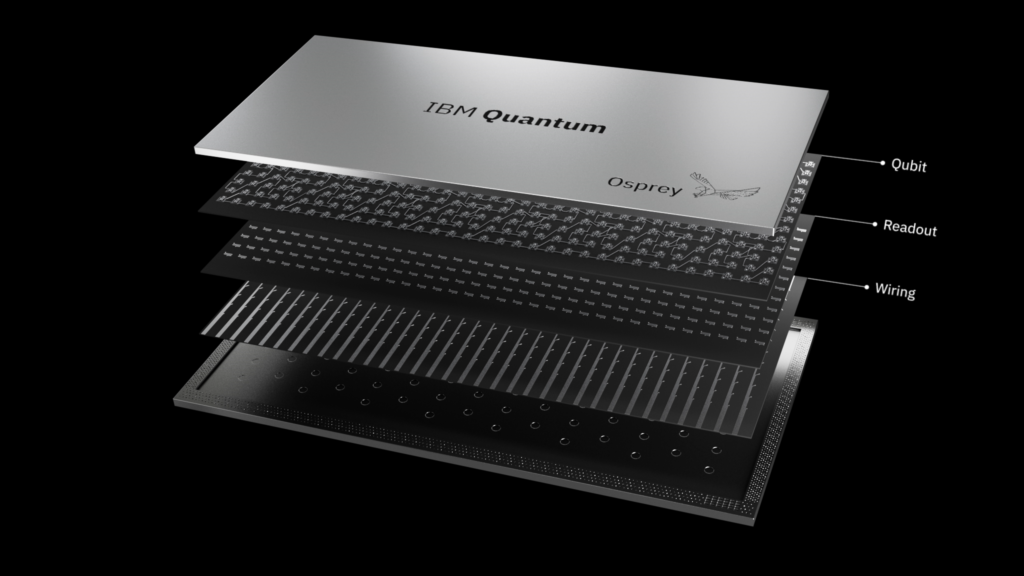Quantum Computing Takes a Leap: IBM’s Eagle Processor Unveils a New Era of Computational Power”
Published: February 3, 2025
Quantum computing has long been heralded as the next frontier in technology, with the potential to transform fields such as cryptography, drug discovery, and materials science. And now, thanks to IBM’s recent unveiling of its Eagle quantum processor, we are one step closer to realising the true power of quantum computing.
Introducing Eagle: A 127-Qubit Processor
At the heart of IBM’s latest breakthrough is the Eagle processor, which boasts an impressive 127 qubits, making it one of the most powerful quantum processors to date. This leap forward is significant because it opens the door to solving complex problems that classical computers simply cannot tackle.
Quantum computers operate on the principles of quantum mechanics, leveraging superposition and entanglement to perform calculations in parallel. While the previous generation of quantum processors, such as IBM’s Condor processor, pushed the boundaries of quantum computing with 80 qubits, Eagle represents a key milestone towards achieving quantum supremacy in real-world applications.
The Implications for Real-World Applications
The most exciting aspect of Eagle is its potential to tackle problems that are otherwise intractable for classical computers. In fields like cryptography, where large prime factorisation is a core challenge, Eagle could offer a way to break traditional encryption methods that have long been the backbone of secure communication.
Additionally, drug discovery stands to benefit tremendously from the power of quantum computing. Eagle’s computational capabilities allow for the simulation of molecular structures with unprecedented precision. This could drastically accelerate the process of developing new drugs and materials, especially in tackling diseases like cancer or neurodegenerative conditions.
Building a Quantum Ecosystem
IBM’s long-term vision for quantum computing extends beyond just hardware. The company is pushing for an open, collaborative approach to quantum development through initiatives like the IBM Quantum Network. This ecosystem connects research institutions, startups, and large enterprises to foster knowledge-sharing and experimentation in quantum technologies.
For businesses, the ability to harness quantum capabilities via cloud computing platforms is equally crucial. IBM’s Quantum as a Service offers clients the ability to access quantum processors remotely, lowering the barrier for entry and allowing organisations to experiment with quantum algorithms without the need to own expensive quantum hardware.
Challenges Remain: Quantum Error Correction and Scalability
Despite its tremendous potential, quantum computing still faces several obstacles, with quantum error correction being one of the biggest challenges. Qubits are highly sensitive to external interference, which can introduce errors into calculations. IBM, alongside other industry leaders like Google and Rigetti, is focusing heavily on error-correcting codes to ensure that quantum computers can operate reliably at scale.
Additionally, scaling up quantum processors to thousands or millions of qubits remains a technical hurdle. IBM’s road to achieving fault-tolerant quantum computing—where error correction is sufficiently robust to allow for long-term, practical use—will take years of research and development. However, the progress represented by Eagle suggests that this milestone may be closer than previously imagined.
A Bright Future for Quantum Computing
IBM’s Eagle processor marks a critical juncture in the evolution of quantum computing. The real-world applications that once seemed like science fiction are now within reach, and IBM’s continued efforts to democratise quantum access mean that industries across the board will soon have the tools to solve problems once thought unsolvable. While challenges remain, the future of quantum computing is undeniably bright, and the race to harness its full potential has only just begun.

